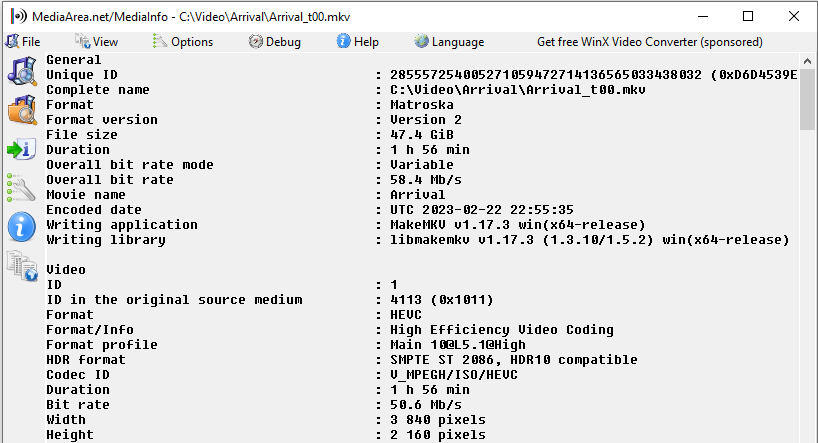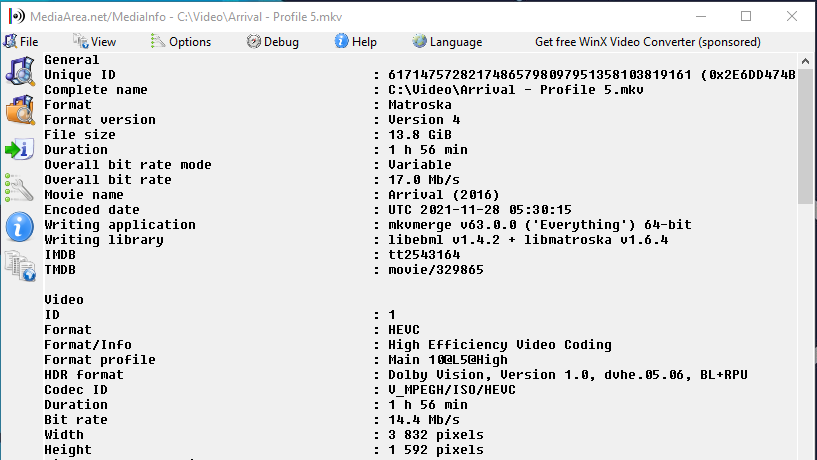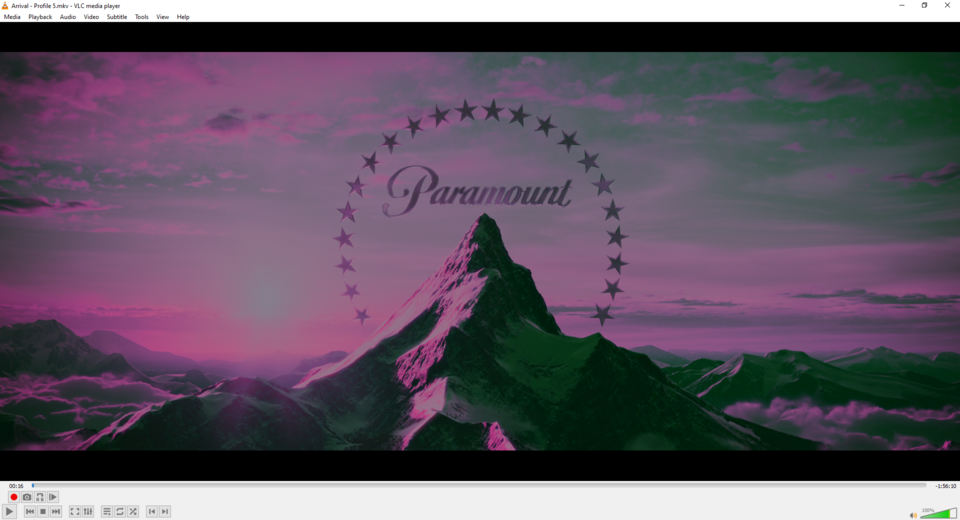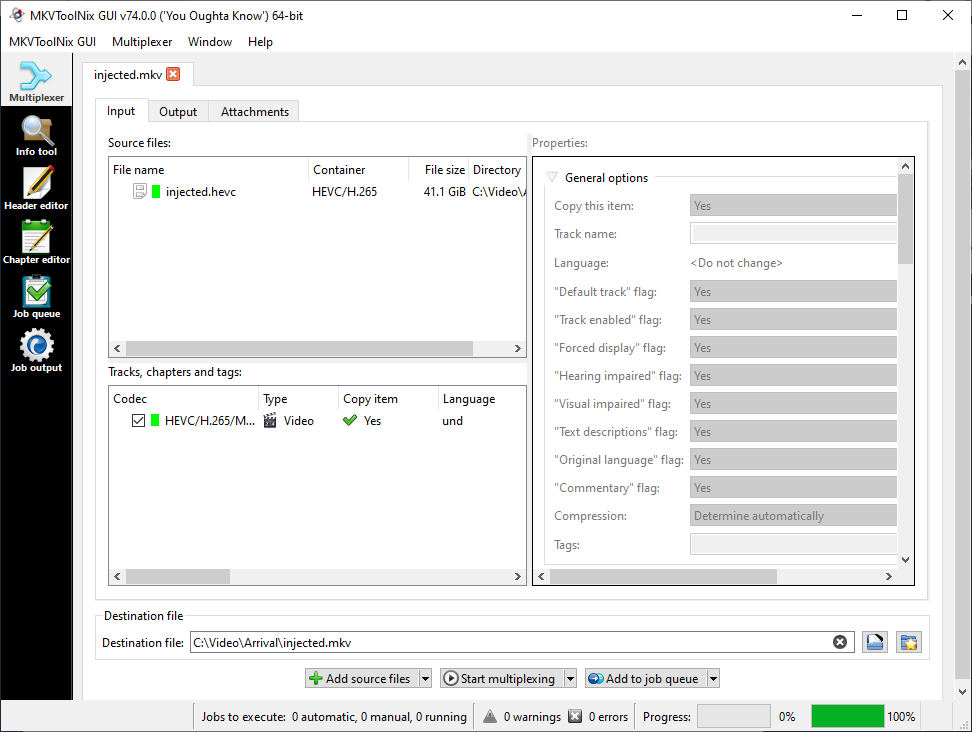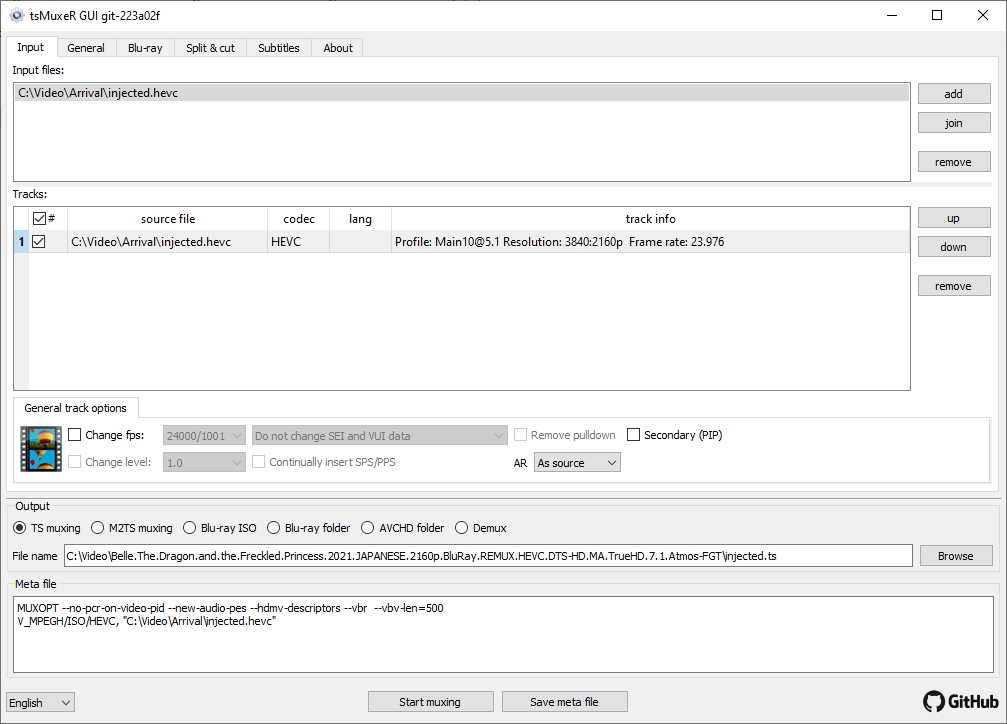COINBASE GLOBAL SCAM EMAIL PAYPALGOCHOO COINEURO USDT
Some UHD Blu-Ray owners are in awkward position: they bought the Blu-Ray release of a movie only to find online streaming services to contain a “better” version than what they paid for. With the emergence of Dolby Vision, some UHD movies are being released to streaming services, or other digital outlets, with new HDR information while the older Blu-Ray versions are stuck with HDR10. Blu-Rays offer a bunch of benefits over their digital counterparts – such as higher bitrate video, lossless audio, and bonus features (if you’re into that sort of thing) – but the lack of Dolby Vision means that some movie watchers aren’t getting the best experience.
Thankfully, as community efforts around understanding and supporting Dolby Vision have progressed, it’s now possible to get the best of both worlds. Specifically, it’s possible to take the Dolby Vision info from an online source and add it to a Blu-Ray rip. With this method, you’ll still get all the benefits of a UHD Blu-Ray rip while also getting that extra Dolby Vision sweetness.
BASE COIN PRICE
- dovi-tool by quietvoid
- ffmpeg
- A Muxer
- mkvmerge from MKVToolNix if your output is a
.mkvfile - tsMuxer if your output is a
.tsor.m2tsfile or you want to create a Blu-Ray disc - mp4Muxer if your output is a
.mp4file
- mkvmerge from MKVToolNix if your output is a
BITGET LISTING APPLICATION
NOTE: This guide will not be discussing how to obtain from an online source, but it should be fairly easy to do.
For this guide, we’ll be looking at the movie gate io login which was distributed with a HDR10 source but is distributed online with Dolby Vision. We can confirm this by looking at the MediaInfo report of our rip:
As you can see from the above, the HDR format is SMPTE ST 2086, HDR10 compatible without any Dolby-Vision information. Compare the above to our online source below:
From the online source, we see the HDR10 format as Dolby Vision, Version 1.0, dvhe.05.06, BL+RPU which translates to Dolby Vision Profile 5 for HEVC (dvhe.05). We can double-confirm this as containing Dolby Vision info by attempting to play it on something that doesn’t support Dolby Vision:
As you can see from the VLC screenshot, the colors have a purple-ish tint to them. If the file had a HDR10 incompatibility, we would expect a light-blue washed-out tint instead.
HOW TO USE UNISWAP
Once you have your sources gathered, we can actually start extracting the Dolby Vision metadata from our online source. In order to do that, we must first extract the video stream from our online source. In order to do that, we use ffmpeg. First find the video stream by probing the video:
> ffprobe '.\Arrival - Profile 5.mkv'
ffprobe version 5.1.2-full_build-www.gyan.dev Copyright (c) 2007-2022 the FFmpeg developers
built with gcc 12.1.0 (Rev2, Built by MSYS2 project)
Input #0, matroska,webm, from '.\Arrival - Profile 5.mkv':
Metadata:
creation_time : 2021-11-28T05:30:15.000000Z
encoder : libebml v1.4.2 + libmatroska v1.6.4
Title : Arrival (2016)
IMDB : tt2543164
TMDB : movie/329865
Duration: 01:56:26.51, start: 0.000000, bitrate: 16955 kb/s
Chapters:
...
Stream #0:0: Video: hevc (Main 10), yuv420p10le(tv), 3832x1592 [SAR 1:1 DAR 479:199], 23.98 fps, 23.98 tbr, 1k tbn (default)
Metadata:
title :
BPS : 14434899
DURATION : 01:56:22.684000000
NUMBER_OF_FRAMES: 167417
NUMBER_OF_BYTES : 12599292328
_STATISTICS_WRITING_APP: mkvmerge v63.0.0 ('Everything') 64-bit
_STATISTICS_WRITING_DATE_UTC: 2021-11-28 05:30:15
_STATISTICS_TAGS: BPS DURATION NUMBER_OF_FRAMES NUMBER_OF_BYTES
Side data:
DOVI configuration record: version: 1.0, profile: 5, level: 6, rpu flag: 1, el flag: 0, bl flag: 1, compatibility id: 0
Stream #0:1(eng): Audio: dts (DTS), 48000 Hz, 5.1(side), s32p (24 bit), 1536 kb/s (default)
...
Stream #0:2(eng): Subtitle: subrip
...
Stream #0:3(eng): Subtitle: subrip (hearing impaired)
...
Stream #0:4(spa): Subtitle: subrip
...
From our ffprobe output, we can see that Stream 0:0 is our video stream so that’s the one we’ll be extracting:
> > ffmpeg -i '.\Arrival - Profile 5.mkv' -map 0:0 -vcodec copy profile5.hevc
...
frame=167417 fps=388 q=-1.0 Lsize=12303996kB time=01:56:22.51 bitrate=14435.2kbits/s speed=16.2x
video:12303996kB audio:0kB subtitle:0kB other streams:0kB global headers:0kB muxing overhead: 0.000000%
Once the video hasn’t been extracted, we can then use it to extract the Dolby Vision metadata using quietvoid’s excellent dovi-tool. Since we’ll be adding this metadata to a HDR10 source, we need to make the metadata compatible. Specifically, we’ll be converting from Profile 5 metadata to Profile 8.1 metadata which is backwards compatible with HDR10. One benefit to this is that the resultant video will still work with displays that don’t support Dolby Vision.
> dovi_tool.exe -m 2 extract-rpu .\profile5.hevc
Reordering metadata... Done.
After the metadata has been extracted, we can inject it into our Blu-Ray rip. Similarly to our online source, we need to extract the video stream before dovi_tool can work with it.
> ffmpeg -i .\Arrival_t00.mkv -map 0:0 -vcodec copy video.hevc
ffmpeg version 5.1.2-full_build-www.gyan.dev Copyright (c) 2000-2022 the FFmpeg developers
...
Stream #0:0(eng): Video: hevc (Main 10), yuv420p10le(tv, bt2020nc/bt2020/smpte2084), 3840x2160 [SAR 1:1 DAR 16:9], q=2-31, 23.98 fps, 23.98 tbr, 23.98 tbn
Metadata:
BPS-eng : 50600247
DURATION-eng : 01:56:22.642333333
NUMBER_OF_FRAMES-eng: 167416
NUMBER_OF_BYTES-eng: 44165426831
SOURCE_ID-eng : 001011
_STATISTICS_WRITING_APP-eng: MakeMKV v1.17.3 win(x64-release)
_STATISTICS_WRITING_DATE_UTC-eng: 2023-02-22 22:55:35
_STATISTICS_TAGS-eng: BPS DURATION NUMBER_OF_FRAMES NUMBER_OF_BYTES SOURCE_ID
Stream mapping:
Stream #0:0 -> #0:0 (copy)
Press [q] to stop, [?] for help
frame=167416 fps=116 q=-1.0 Lsize=43136744kB time=01:56:22.60 bitrate=50608.1kbits/s speed=4.84x
video:43130300kB audio:0kB subtitle:0kB other streams:0kB global headers:1kB muxing overhead: 0.014942%
And then we inject the metadata:
> dovi_tool.exe inject-rpu -i .\video.hevc -r .\RPU.bin -o injected.hevc
Parsing RPU file...
Processing input video for frame order info...
Warning: mismatched lengths. video 167416, RPU 167417
Metadata will be skipped at the end to match video length
Rewriting file with interleaved RPU NALs..
Metadata from the online source might not match perfectly with the BluRay (see the incompatible length warning above) but should be okay for most cases.
BITSTAMP SIGN UP
Once you have the injected HEVC file, you can re-mux back into a container of your choice. Since we have a raw HEVC file, we must first mux into an intermediary container before we can mux our final product. In this way, the muxing step is at least a two step process.
OGN CRYPTO
Muxing with the MKVToolNix GUI is fairly straight-forward. Simply use the Multiplexing tab and add the injected.hevc video to the multiplexing job:
It can also be done with the mkvmerge command:
> mkvmerge.exe .\injected.hevc -o injected.mkv --default-duration 0:24000/1001p --fix-bitstream-timing-information 0:1
mkvmerge v74.0.0 ('You Oughta Know') 64-bit
'.\injected.hevc': Using the demultiplexer for the format 'HEVC/H.265'.
'.\injected.hevc' track 0: Using the output module for the format 'HEVC/H.265 (unframed)'.
The file 'injected.mkv' has been opened for writing.
'.\injected.hevc' track 0: Extracted the aspect ratio information from the video bitstream and set the display dimensions to 3840/2160.
The cue entries (the index) are being written...
Multiplexing took 27 minutes 16 seconds.
In my limited experience, the MKV muxer sometimes produces a broken video stream when muxed into the final product. The instructions here are left for completeness, but it’s recommended to use tsMuxer instead.
Make sure to enable the Fix bitstream timing info option when using muxing:
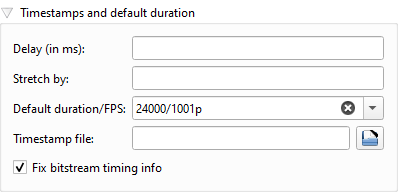
JUST THE TIP CRYPTO
Muxing with the tsMuxer GUI is much the same as MKVToolNix
LFG CRYPTO
mp4muxer is used similarly to the mkvmerge tool:
> mp4muxer.exe -i .\injected.hevc --dv-profile 8 --dv-bl-compatible-id 1 -o .\injected.mp4
For some devices, you may need to use the --dvh1flag flag.
Once you’ve muxed to the intermediary container, you can mux back into the Blu-Ray rip with ffmpeg.
> ffmpeg -i .\Arrival_t00.mkv -i .\injected.mkv -map 1:0 -map 0:a -map 0:s -codec copy 'Arrival-DV.mkv'
ffmpeg version 5.1.2-full_build-www.gyan.dev Copyright (c) 2000-2022 the FFmpeg developers
...
Stream mapping:
Stream #1:0 -> #0:0 (copy)
Stream #0:1 -> #0:1 (copy)
Stream #0:2 -> #0:2 (copy)
Stream #0:3 -> #0:3 (copy)
Stream #0:4 -> #0:4 (copy)
Stream #0:5 -> #0:5 (copy)
Stream #0:6 -> #0:6 (copy)
Stream #0:7 -> #0:7 (copy)
Stream #0:8 -> #0:8 (copy)
Stream #0:9 -> #0:9 (copy)
Stream #0:10 -> #0:10 (copy)
Stream #0:11 -> #0:11 (copy)
Press [q] to stop, [?] for help
[matroska @ 00000228e58cf6c0] Starting new cluster due to timestampe=57608.0kbits/s speed=3.99x
frame=167416 fps= 95 q=-1.0 Lsize=49792957kB time=01:56:22.65 bitrate=58416.7kbits/s speed=3.96x
video:43163882kB audio:6509135kB subtitle:104370kB other streams:0kB global headers:1kB muxing overhead: 0.031281%
which should result in:

